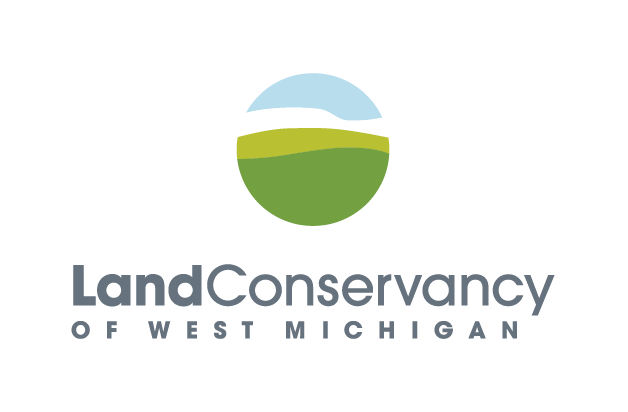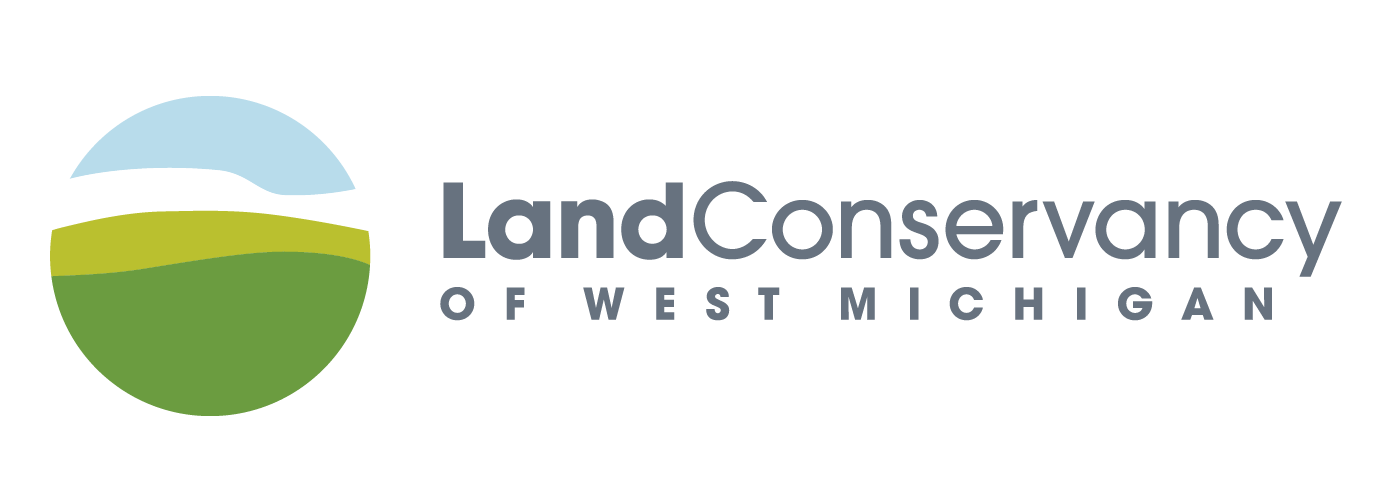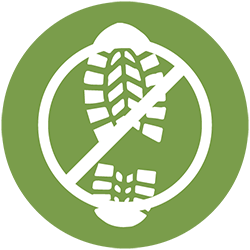Visitor Information
Saul Lake Bog Preserve can be accessed from the driveway located at 10471 Six Mile Road, Rockford, Michigan. Turn into the driveway, follow the signs, and bear left into the preserve. The road ends in the preserve’s spacious gravel parking area.
The gate to the preserve may be closed seasonally. In this case, park directly in front of the gate and walk the rest of the way to the preserve. If a car is already parked in front of the gate, please return to the preserve at another time. Please respect our neighbors’ property and do not park on the lawn.
Saul Lake Bog Nature Preserve is a Category 1 preserve—one of the Land Conservancy’s easiest preserves to access. There are no restrooms at this preserve.
A short walk from the parking area, visitors can experience several iconic features of the West Michigan landscape: oak-hickory and beech-maple forests, hardwood swamps and vernal pools, sphagnum bogs and tallgrass prairies. Overlooks and boardwalks provide impressive views of the bog and other wetlands—and frequent glimpses of the wildlife they contain. The restored tallgrass prairie is one of the most popular features of the property because of its shifting beauty throughout the seasons.
Note: because of the sensitivity of bog ecosystems, the bog itself is closed to the public, including classes and groups. Access to the bog is by permit only. Contact Justin for more information about Special Access Permits.
Conservation Value
This preserve permanently protects Saul Lake Bog and other wetlands nearby. Saul Lake Bog is one of the most biodiverse bogs in Michigan, supporting more than 90 native plant species and an incredible variety of birds, insects, and other wildlife. The forests on the preserve provide a haven for wildlife in a landscape heavily impacted by agriculture, and a major restoration project seeks to expand a native tallgrass prairie—one of Michigan’s most imperiled ecosystem types.
Saul Lake Bog Preserve is home to a long-term ecological restoration project to convert an old pasture dominated by European grasses into a native tallgrass prairie. The project started as a small patch of native grasses and wildflowers in the early 2000s. Today, thanks to volunteer-led efforts to collect and plant seeds, the prairie now encompasses 34 acres. Prescribed fires are used periodically to encourage the prairie vegetation, knock back invasive species, and maintain a high diversity of vegetation.
Elsewhere on the preserve, the Land Conservancy—with the help of many volunteers—is planting trees in old pastures to restore forests and savannas that were previously cleared for farming. The preserve is also a popular destination for school groups and others studying Michigan’s unique natural features.
History
According to General Land Office surveys conducted circa 1800, Saul Lake Bog Nature Preserve was mostly composed of oak-hickory forests interspersed with mixed-conifer swamp prior to European settlement.
Saul Lake is named for the Saul brothers, John and Mikel, who emigrated from Ireland and lived on the property for several decades beginning in the 1860s. Forty acres of the property, most of which was part of the bog, was deeded by the U.S. government to the G.R.& I Railroad in 1871, but the planned track was never built. Ownership of the parcel reverted to Mikel Saul until 1913.
From the time of the Saul brothers’ settlement to the late 1980s, a period of about 120 years, nearly all the non-wetland areas of the property were cleared and farmed. In the years leading up to the preserve’s establishment, the fields were planted with European grasses and mowed for hay. Interest in protecting the unique wetlands on the property began in the late 1970s, shortly after the establishment of the Natural Areas Conservancy of West Michigan (NACOWMI, now the Land Conservancy).
In 1989, partnering with the Steelcase Foundation, Grand Rapids Foundation, and many community members, NACOWMI purchased 52 acres of the property from Valerino and Maria Castro, establishing the organization’s first nature preserve. In 1991, the Land Conservancy acquired the remaining land through an additional purchase and a gift of land by the Castro family. Under Land Conservancy’s ownership, management of the preserve has focused on protecting the bog, reforesting previously cleared areas, and establishing a tallgrass prairie.
















